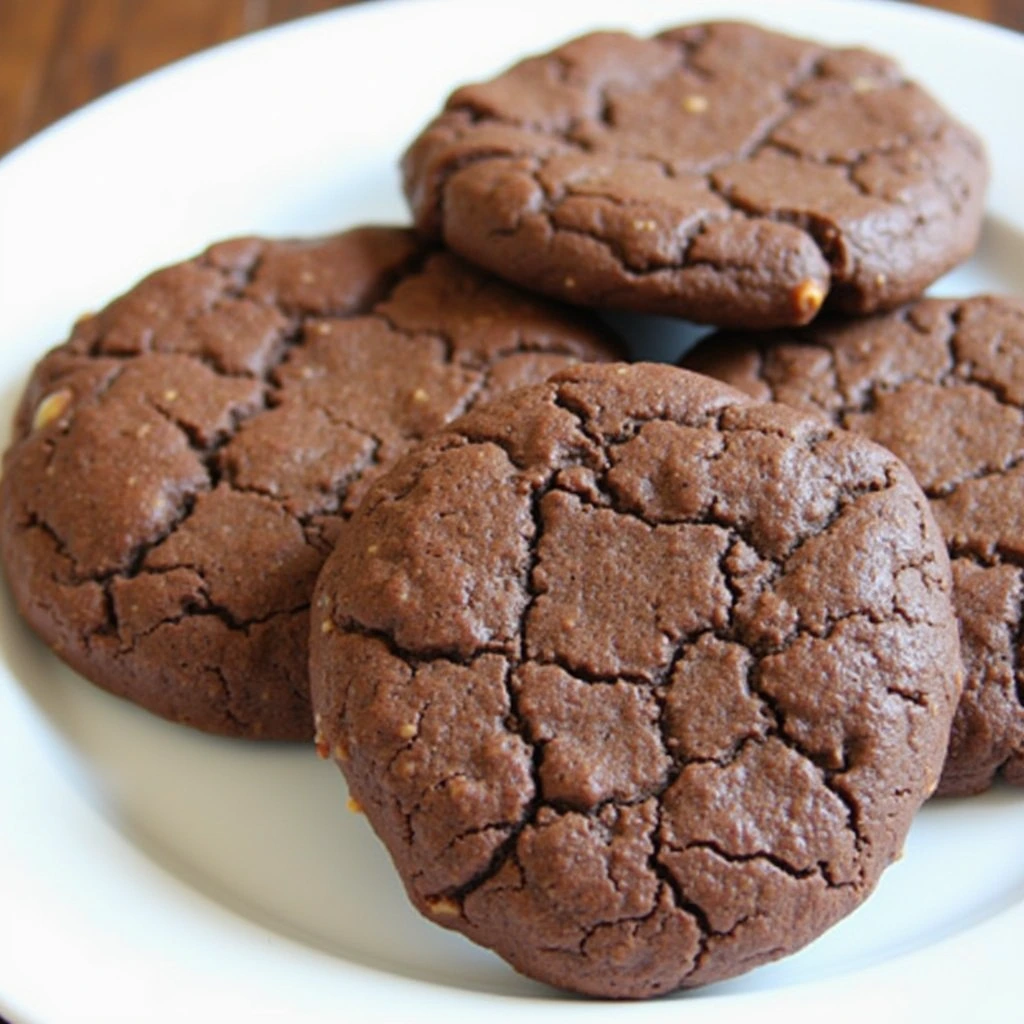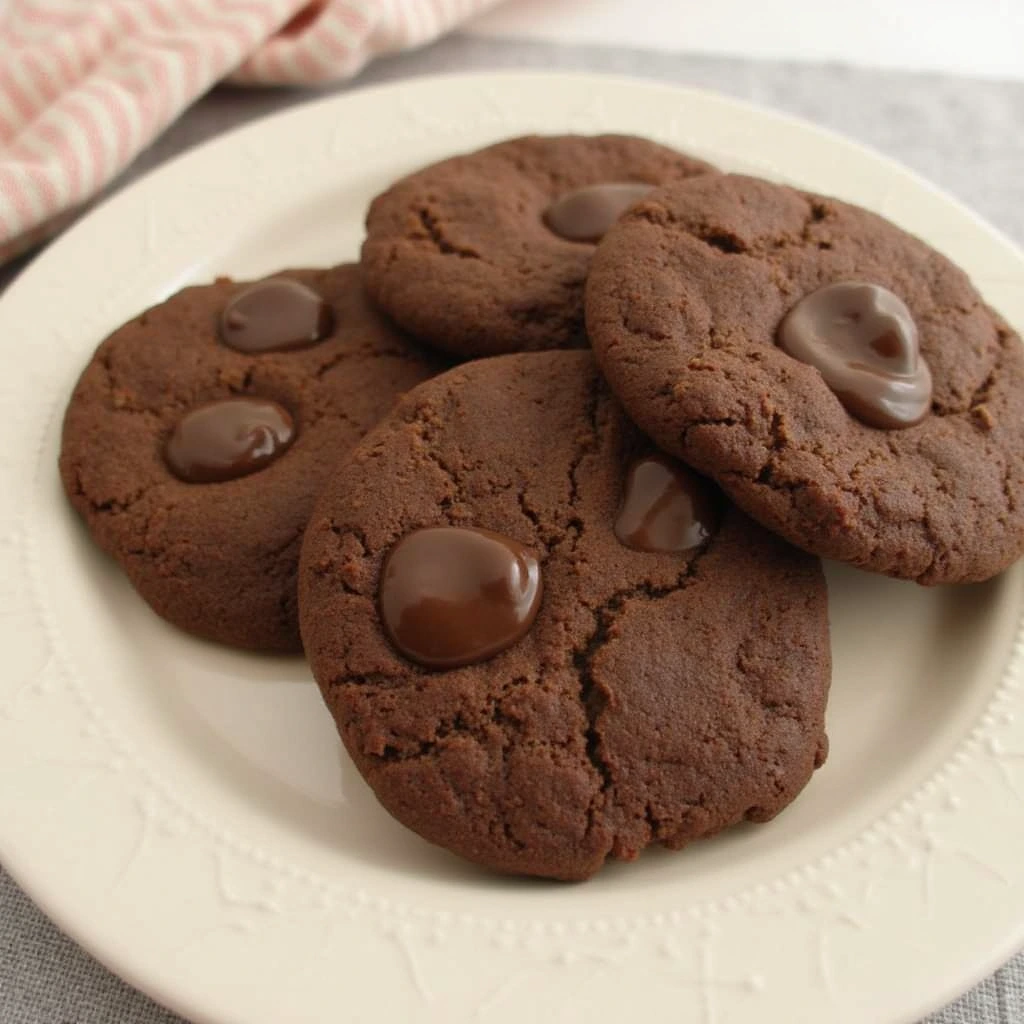Whether you’re out of eggs, baking for someone with an allergy, or following a vegan lifestyle, making chocolate cookies without eggs is a smart, delicious choice. Egg-free baking has become increasingly popular—not just for health or dietary reasons, but also for its flexibility and simplicity.
With the right ingredients and techniques, you can still enjoy cookies that are chewy, soft, and full of rich chocolate flavor—without needing eggs at all. In fact, many bakers find that egg substitutes like milk, applesauce, or flaxseed not only work beautifully but also add unique textures or subtle flavor enhancements.
Egg-free cookies are ideal for beginner bakers, kid-friendly recipes (hello, safe-to-eat dough!), and anyone who wants a dessert that everyone can enjoy. In this guide, we’ll walk through everything you need to know—from ingredients and baking tips to variations and storage—to master the perfect batch of chocolate cookies without eggs.
Table of Contents
Key Ingredients for Egg-Free Chocolate Cookies
The secret to delicious chocolate cookies without eggs lies in choosing the right ingredients that replicate the binding and moisture-retaining properties of eggs—without sacrificing taste or texture.
🍫 Core Ingredients:
- All-Purpose Flour: The structure base of your cookie.
- Cocoa Powder: Provides the rich chocolate flavor. Use unsweetened for best results.
- Baking Soda or Baking Powder: Leavens the dough and adds lightness, especially important without eggs.
- Butter or Margarine: Adds moisture and flavor. Vegan alternatives like plant-based butter also work well.
- Brown Sugar & Granulated Sugar: Brown sugar adds chewiness and a hint of molasses; white sugar helps with crisp edges.
- Vanilla Extract & Salt: Essential flavor enhancers.
🥄 Egg Substitutes:
- Milk (dairy or plant-based): Adds moisture and helps bind ingredients.
- Applesauce or Mashed Banana: Offer natural sweetness and softness.
- Flaxseed or Chia “Egg”: Mix 1 tbsp of ground flaxseed or chia with 3 tbsp water for a binder with fiber.
- Yogurt (dairy or non-dairy): Adds creaminess and a slight tang.
These substitutes work best in soft and chewy chocolate cookies, and you can tailor them to your dietary preferences—whether vegan, dairy-free, or allergen-conscious.

Step-by-Step: Classic Chocolate Chip Cookies Without Eggs
This simple, foolproof recipe delivers soft, chewy, and rich chocolate chip cookies without eggs—perfect for beginners or anyone baking on a budget or with dietary needs.
🧾 Ingredients:
- 1 ¼ cups all-purpose flour
- ¼ cup unsweetened cocoa powder
- ½ tsp baking soda
- ¼ tsp salt
- ½ cup unsalted butter (or vegan butter), softened
- ½ cup brown sugar
- ¼ cup white sugar
- ¼ cup applesauce (or 1 flax egg)
- 1 tsp vanilla extract
- ½–¾ cup chocolate chips
👩🍳 Instructions:
- Preheat oven to 350°F (175°C). Line a baking sheet with parchment paper or a silicone mat.
- In a medium bowl, whisk together dry ingredients: flour, cocoa powder, baking soda, and salt.
- In a large bowl, cream butter and sugars together until light and fluffy using a mixer or spatula.
- Mix in the applesauce and vanilla extract until fully combined.
- Gradually add the dry ingredients to the wet, mixing until just combined—don’t overmix.
- Fold in chocolate chips. If the dough is too sticky, chill for 20–30 minutes.
- Scoop dough into balls (about 1½ tablespoons each) and place on the prepared baking sheet.
- Bake for 10–12 minutes or until the edges are set and the centers look slightly soft.
- Let cookies cool on the baking sheet for 5 minutes before transferring to a wire rack.
These cookies are rich, fudgy, and loaded with chocolate flavor—no eggs required. You won’t even notice they’re egg-free!
Best Egg Substitutes for Chocolate Cookies
When making chocolate cookies without eggs, it’s important to choose the right substitute based on your desired texture, flavor, and dietary needs. Here are the most effective options:
🥣 1. Applesauce
Use ¼ cup of unsweetened applesauce to replace one egg. It adds moisture and a slight sweetness, making it ideal for soft, chewy cookies. Best for classic and double chocolate recipes.
🌱 2. Flaxseed “Egg”
Combine 1 tablespoon ground flaxseed with 3 tablespoons water. Let sit for 5–10 minutes until it thickens. This high-fiber substitute adds a slight nutty taste and works great in denser, chewier cookies.
🫘 3. Aquafaba
Use 3 tablespoons of the liquid from canned chickpeas to replace one egg. Aquafaba mimics egg whites, giving structure and lightness—perfect for crisp-edged or meringue-like cookies.
🍌 4. Mashed Banana
¼ cup mashed banana equals one egg. It creates extra soft cookies and adds natural sweetness. Ideal for breakfast-style or oat-based chocolate cookies.
🥛 5. Yogurt or Plant-Based Yogurt
¼ cup works well in cookie doughs that need moisture and a bit of creaminess. Choose unsweetened versions to control flavor.
The key is to match the substitute to the cookie type—chewy, cakey, or crisp—to get bakery-quality results without eggs.

Popular Variations of Chocolate Cookies Without Eggs
Once you’ve nailed the base recipe, you can easily customize your chocolate cookies without eggs into exciting new flavors. Here are some popular and beginner-friendly variations:
🍪 1. Chocolate Chip Cookies with M&Ms
Swap or mix your chocolate chips with colorful M&Ms or candy-coated chocolate. This adds crunch, color, and a kid-friendly twist—perfect for parties or holidays.
🍫 2. Double Chocolate Eggless Cookies
Use cocoa powder in the dough and mix in chocolate chunks or white chocolate chips for a rich, fudgy double chocolate hit. Great for serious chocoholics.
🌰 3. Nutty Chocolate Cookies
Add ½ cup chopped walnuts, almonds, or pecans to the dough. Nuts add texture, flavor depth, and healthy fats. Toast them first for extra crunch and aroma.
🍒 4. Cranberry-Chocolate Eggless Cookies
Stir in dried cranberries or cherries for a tart contrast to the sweet chocolate. These are ideal for winter or holiday-themed treats, and pair well with dark chocolate chips.
These variations keep your cookies egg-free while adding new textures, colors, and flavors. Mix and match to create your perfect batch!
Tips for Perfect Texture Without Eggs
Getting the right texture in chocolate cookies without eggs is all about balance—moisture, fat, and careful handling. Without eggs to bind and soften, these tips help you achieve chewy, tender, or crisp cookies with ease.
❄️ 1. Chill the Dough
Eggless dough is often softer due to the liquid substitutes (like applesauce or yogurt). Chilling it for 30–60 minutes firms it up, reduces spreading, and enhances flavor.
🔄 2. Don’t Overmix
Overworking the dough can activate the gluten too much, making cookies tough. Mix just until the ingredients are combined—especially after adding dry ingredients.
🌡️ 3. Bake at the Right Temperature
Stick to 350°F (175°C) unless your recipe says otherwise. Too hot, and cookies may crisp too quickly; too cool, and they may spread too much or turn cakey.
⏱️ 4. Watch the Bake Time
Eggless cookies can dry out faster. Remove them when the edges are set and the center is just a little soft—they’ll firm up as they cool.
🧺 5. Let Them Cool
Let cookies cool on the baking sheet for 5–10 minutes before transferring. They’re delicate when hot, and this resting period helps them set properly.
Storage and Freezing Instructions
One of the best things about chocolate cookies without eggs is that they store just as well—if not better—than traditional ones. With no eggs, there’s less risk of spoilage and more flexibility for make-ahead baking.
🕒 Room Temperature
Store cooled cookies in an airtight container at room temperature for up to 5 days. Place parchment between layers to avoid sticking.
❄️ Refrigeration
If your recipe uses perishable egg replacers like yogurt or banana, refrigerate them in a sealed container. Let sit at room temperature 10 minutes before serving for best texture.
🧊 Freezing
- Baked cookies: Freeze in layers with parchment for up to 3 months.
- Raw dough: Scoop into balls, freeze on a tray, then transfer to a bag. Bake straight from frozen—just add 1–2 minutes to the baking time.
With the right storage, you’ll always have delicious, egg-free cookies ready when cravings strike.

Nutrition & Allergen Insights
Making chocolate cookies without eggs isn’t just a great allergy-friendly option—it can also lead to a more balanced treat. By skipping eggs and using plant-based or whole-food alternatives, you gain flexibility in both nutrition and allergen control.
✅ Lower Cholesterol
Egg-free cookies naturally contain zero dietary cholesterol, especially when paired with plant-based butter or oil. Ideal for heart-conscious diets.
🌾 Allergy-Friendly & Customizable
These cookies can be made dairy-free, nut-free, or gluten-free by simply adjusting the butter, flour, or add-ins. Choose allergy-safe chocolate chips and flour alternatives like oat or almond flour as needed.
🥣 Boosted Nutrients with Substitutes
Using flaxseed or chia adds fiber, omega-3s, and protein. Bananas and applesauce contribute natural sugars and potassium—without artificial additives.
While still a dessert, eggless chocolate cookies offer a smarter indulgence—especially when tailored to your specific dietary goals.
FAQs – Based on “People Also Ask”
1. Can I make chocolate cookies without eggs and still get chewy results?
Yes! Chewiness depends more on moisture and fat than eggs. Substitutes like applesauce, mashed banana, or a flax egg (1 tbsp flaxseed + 3 tbsp water) can help replicate that soft, chewy texture. Using brown sugar and slightly underbaking also helps keep them moist.
2. What’s the best egg substitute for chocolate cookie recipes?
It depends on the texture you want:
- Flax or chia eggs work best for chewy cookies.
- Applesauce adds moisture and mild sweetness.
- Aquafaba (chickpea brine) gives structure and lift.
- Banana or yogurt is great for soft, cake-like cookies.
Choose based on your flavor and texture preference.
3. Is it safe to eat eggless cookie dough?
Yes, if you use heat-treated flour and no raw egg, it’s generally safe. Many eggless recipes are perfect for edible dough. You can also make flour safe by baking it on a tray at 300°F (150°C) for 5–7 minutes before using it in no-bake doughs.
4. Why do eggless cookies spread too much or turn hard?
Excess spreading is often caused by:
- Dough that’s too warm or wet (chill it first)
- Too much sugar or butter
- Not enough binding (adjust the egg substitute)
Hard cookies can come from overbaking or not enough moisture in the dough. Always test bake one or two cookies first.
5. Can I make egg-free cookies without dairy too?
Absolutely. Use plant-based butter (or coconut oil) and non-dairy milk like almond or soy. Many chocolate chips are naturally vegan, but double-check labels. These swaps make it easy to create completely vegan chocolate cookies that everyone can enjoy.
Final Thoughts
Baking chocolate cookies without eggs proves that dietary restrictions or missing ingredients don’t have to limit flavor, texture, or creativity. With simple substitutions like applesauce, flaxseed, or aquafaba, you can craft cookies that are soft, chewy, and rich—no eggs required.
Whether you’re baking for an allergy, a vegan lifestyle, or just ran out of eggs, these cookies deliver every time. Plus, they’re easy enough for beginners and safe enough for kids to help with.
So grab your favorite mix-ins, preheat that oven, and enjoy cookies that everyone at the table can bite into—worry-free.

